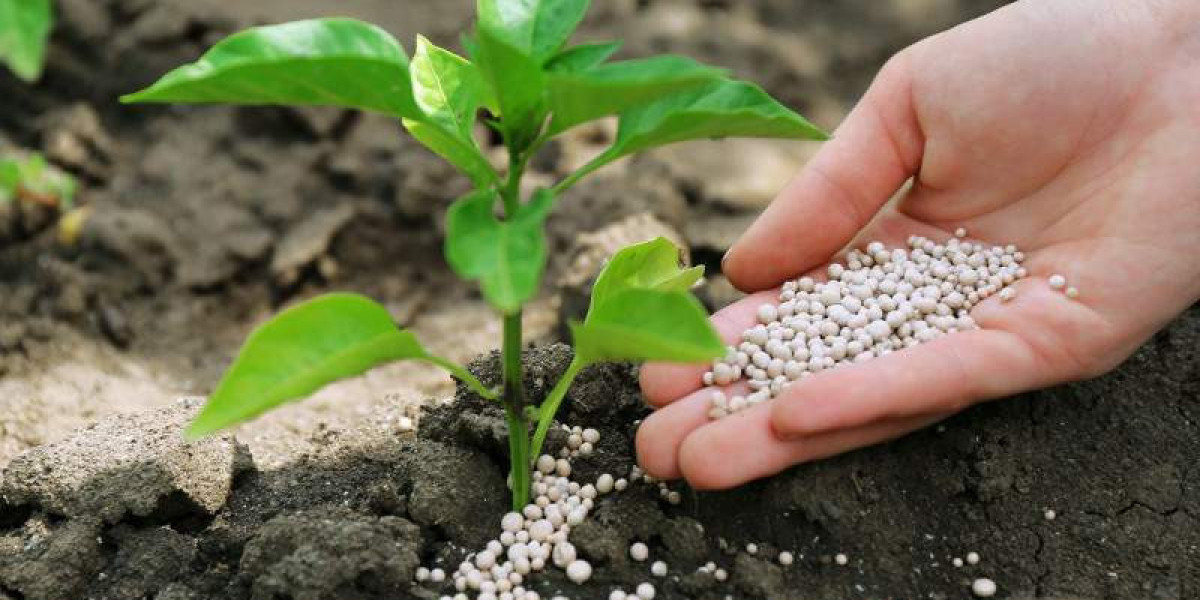Government policies and agricultural subsidies play a critical role in shaping the agricultural landscape and directly impact the usage of fertilizers, including foliar fertilizers. As governments worldwide seek to address food security, environmental sustainability, and agricultural productivity, their regulatory actions and financial incentives significantly influence the adoption of various fertilization methods. This article explores the impact of government policies and agricultural subsidies on the foliar fertilizers market, highlighting the key shifts in fertilizer usage and their implications for the future of global agriculture.
1. Government Policies Driving Fertilizer Usage Patterns
Government policies related to agriculture, sustainability, and environmental protection are pivotal in determining the adoption and use of fertilizers in different regions. These policies influence how fertilizers, including foliar fertilizers, are applied, regulated, and incentivized.
Regulations and Fertilizer Efficiency Standards
Governments are increasingly setting regulations that focus on improving fertilizer efficiency and minimizing environmental damage. Policies such as those promoting the use of slow-release or controlled-release fertilizers are designed to reduce nutrient runoff and minimize soil degradation. Foliar fertilizers, being a more efficient means of nutrient delivery, are in alignment with such regulations as they provide targeted nutrient application, reducing waste and environmental impact. These policies encourage farmers to adopt more sustainable fertilization methods, thus contributing to the growth of the foliar fertilizers market.Fertilizer Subsidies and Incentives
In many countries, governments offer subsidies on chemical fertilizers, which have historically been the primary method of fertilization. However, as sustainability concerns grow, some governments are shifting their focus toward promoting more environmentally friendly and efficient fertilization methods, including foliar feeding. In regions where subsidies are provided for eco-friendly agricultural inputs, the adoption of foliar fertilizers is expected to rise. Government-backed incentives for sustainable farming practices, such as organic farming or precision agriculture, further contribute to the increasing use of foliar fertilizers.
2. Agricultural Subsidies and Their Role in Market Dynamics
Agricultural subsidies are a powerful tool for governments to influence the types of inputs used in farming. These financial incentives can shift the market dynamics by making certain fertilizers more accessible to farmers, thus promoting the use of specific agricultural solutions.
Subsidies for Sustainable Farming Practices
As environmental sustainability becomes a priority for many governments, subsidies are being introduced to encourage the use of organic and bio-based fertilizers. Foliar fertilizers, particularly those made with natural and biostimulant components, align with these trends and are often included in subsidy programs. For example, governments offering incentives for organic farming can help reduce the cost barrier for smallholder farmers to access foliar fertilizers, thus boosting adoption rates in developing regions.Cost-Effectiveness of Foliar Fertilizers with Subsidies
In regions where subsidies are provided for specific types of fertilizers, such as those with lower environmental impact, the cost-effectiveness of foliar fertilizers becomes even more evident. Farmers, especially in developing countries, are often constrained by limited resources, making subsidies a critical factor in the decision to adopt new fertilization technologies. With government assistance, the upfront cost of foliar fertilizers can be mitigated, making them a more attractive option for farmers looking to improve their productivity while adhering to environmental regulations.
3. Impact of Policy Shifts on Fertilizer Usage Trends
Government policies are not only influencing the direct use of fertilizers but also encouraging broader changes in agricultural practices. These shifts are steering the industry toward more efficient, sustainable, and precision-based fertilization methods.
Push Toward Precision Agriculture
Many governments are supporting the adoption of precision agriculture, which involves the use of technology such as drones, GPS, and sensor-based systems to optimize fertilizer application. Foliar fertilizers are a perfect fit for precision farming practices, as they allow for targeted nutrient delivery, reducing waste and improving nutrient uptake efficiency. As more governments incentivize the adoption of precision agriculture, foliar fertilizers are likely to become increasingly prevalent.Focus on Soil Health and Reduced Chemical Usage
With growing concerns over the environmental impact of excessive chemical fertilizer use, some governments are shifting towards policies that encourage reduced chemical inputs. This includes both financial support for sustainable farming and regulations that limit the use of certain fertilizers. Foliar fertilizers, which are more efficient in nutrient delivery and require smaller quantities compared to traditional soil-applied fertilizers, are gaining popularity as a result. Policies that encourage reduced chemical usage and promote eco-friendly alternatives help position foliar fertilizers as a desirable option for farmers.
4. Case Studies of Government Policies and Their Influence on Fertilizer Usage
Several countries have implemented policies that directly affect fertilizer usage and are likely to shape the future of the foliar fertilizers market.
India’s Fertilizer Subsidy Program
India is one of the largest consumers of fertilizers globally, and the government provides substantial subsidies for both chemical and organic fertilizers. The shift towards promoting organic farming and efficient nutrient management has led to the growing adoption of foliar fertilizers in India. Government support for bio-based fertilizers, coupled with the desire to improve soil health, is driving the use of foliar feeding as an effective alternative to traditional chemical fertilizers.European Union’s Green Deal and Fertilizer Regulations
The European Union’s Green Deal is a comprehensive policy aimed at reducing carbon emissions and promoting sustainable agriculture. One of the central components of this deal is the European Farm to Fork Strategy, which seeks to reduce the use of chemical fertilizers and promote organic farming practices. As part of this strategy, foliar fertilizers that contain organic or biostimulant ingredients are being encouraged. In countries like France and Germany, policies that restrict chemical fertilizer use while promoting more sustainable alternatives are driving the shift toward foliar feeding.China’s Agricultural Modernization Policies
China, with its large agricultural sector, is making significant strides toward modernizing its farming practices. The Chinese government has implemented policies that promote the adoption of environmentally friendly fertilizers and precision agriculture. The country’s emphasis on improving nutrient use efficiency and reducing environmental impact is leading to increased adoption of foliar fertilizers. Subsidies for efficient fertilizers, including foliar options, are expected to play a key role in boosting their usage among farmers.
5. Challenges and Opportunities for the Foliar Fertilizers Market
While government policies and subsidies provide substantial support for the foliar fertilizers market, challenges remain.
Limited Awareness and Education
In some regions, farmers may lack awareness of the benefits and effectiveness of foliar fertilizers. Government education programs and extension services that promote the advantages of foliar feeding can help increase adoption rates.Regulatory Uncertainties
Frequent changes in government policies or regulatory frameworks can create uncertainty for manufacturers and distributors of foliar fertilizers. Consistent and long-term policy support is essential for market stability and growth.
Conclusion
Government policies and agricultural subsidies play a pivotal role in shaping the foliar fertilizers market. By incentivizing sustainable practices, supporting precision agriculture, and providing financial assistance to farmers, these policies are driving the adoption of foliar fertilizers globally. As environmental concerns grow and agricultural practices evolve, foliar fertilizers will continue to play a crucial role in enhancing crop productivity and sustainability. Governments' ongoing support for these products is essential in creating a favorable environment for their long-term growth and integration into modern farming systems.
Learn more:-https://www.pristinemarketinsights.com/foliar-fertilizers-market-report










